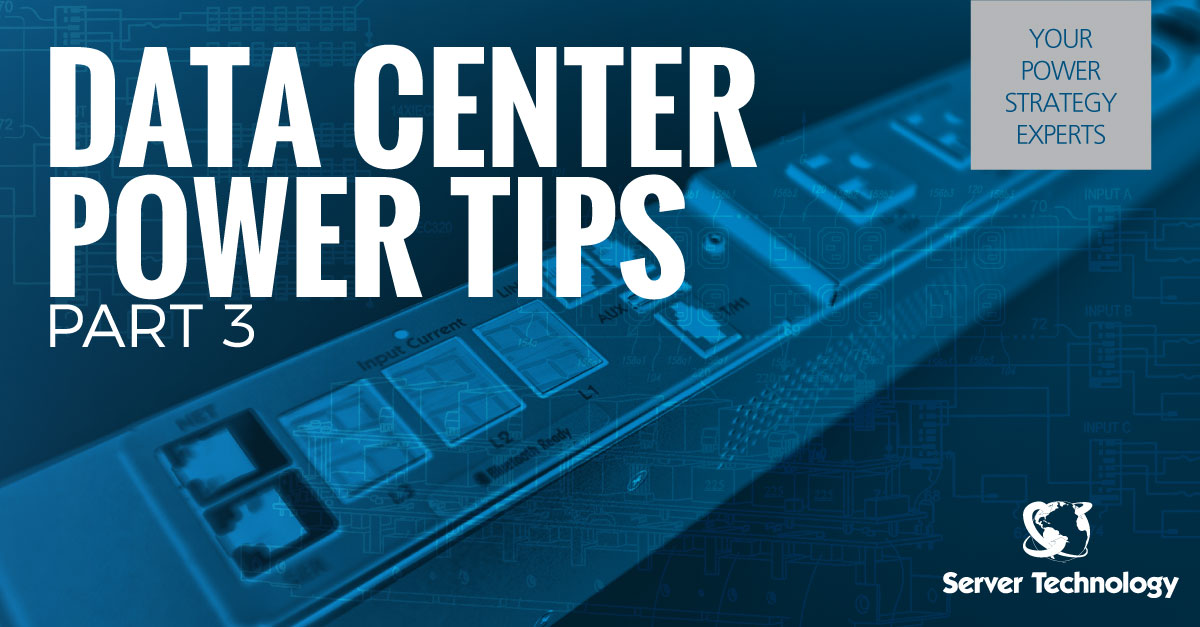Top Power Tips For Data Center Managers: Part 3
Josh Schaap
July 13, 2016
- Categories:
- Tags:

Over the past couple of posts (Part 1, Part 2), we’ve looked at some best practices for power density and voltage as well as environmental monitoring in the IT equipment racks. In this final installment, we’ll examine power usage and the measuring of energy efficiency.
When you measure data center energy efficiency, you’re really monitoring power usage in order to reduce wasted energy. For nearly the past decade, the PUE (Power Usage Effectiveness) and DCiE (Data Center Infrastructure Efficiency) ratings have been the gold standards for measuring efficiency within data centers. Although with ASHRAE 90.4, PUE has been phased out as an acceptable metric for data center power efficiency. At the individual data center level, the end goal of these methods is to help you better measure your power usage so you can start the process of improving your energy efficiency and realizing cost savings for your data center.
With power control down to the device (or rack PDU outlet) level, you’re enabled to identify areas for energy efficiency improvements such as:
Turning off outlets when not needed: Power control to individual outlets helps with security, capacity and cost savings by shutting off outlets when they’re not needed. This allows the administrator protect against unauthorized usage by controlling the state of the outlets at any given time. Also, if a rack PDU hits its rated limits, you can turn off any unused outlets to prevent further usage that might trip circuit protection. If IT equipment is only used at certain times, powering the gear off is the quickest path to energy savings and conservation.
Identify underutilized equipment: Using kWh data with low power threshold triggers helps you pinpoint underused or idle IT equipment that you can either consolidate or consider for virtualization. Want to learn about zombie servers? Read this.
Better cost allocation: You can achieve this with kWh numbers, both high level and low level. This is particularly useful for identifying individual department usage or chargeback and within a colocation setting where you can compare your actual usage with fee models. In other words, it helps answer the question, “why bother conserving energy if we’re not being billed for it?
Prevent overloading: When you can monitor loading at the rack PDU level, you get information that can prevent overloading the circuit as well as prevent tripping Remote Power Panel (RPP) circuit protection. This allows you to identify circuits close to overloading before they become big, costly problems.
Read the complete list of power tips in our whitepaper, “The Top 10 Things Every Data Center Manager Should Know About Power” today.
Thanks for your submission. One of our Power Strategy Experts will get back to you shortly.